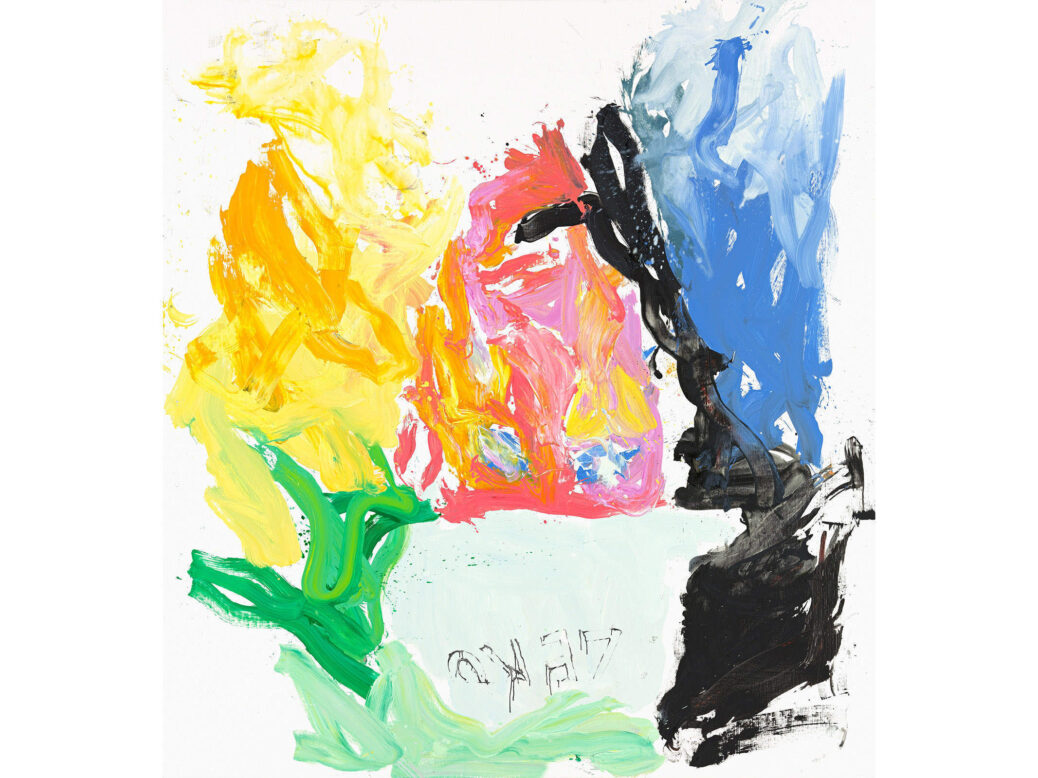
Farewell Bill
Gagosian Gallery, London WC1
Germany Divided: Baselitz and His Generation
British Museum, London WC1
Renaissance Impressions
Royal Academy of Arts, London W1
Georg Baselitz is now 76 and it is more than 50 years since he outraged Berlin gallery-goers with a dark and visceral masturbatory painting called The Big Night Down the Drain (1963). In 1969 he turned shock into bemusement when he produced his first upside-down painting, The Wood on Its Head. His rationale for painting upside-down pictures was that it was a way of being simultaneously abstract and figurative. Viewers were forced to see the pictures as collections of marks rather than as representations of motifs. As Baselitz put it: “The reality is the picture, it is most certainly not in the picture.”
His art has always been an attempt to work out what it means to be a German of the immediate postwar generation. Baselitz was born in East Germany and moved to West Berlin to study art in 1958, shortly before the Berlin Wall went up. Under the influence of the American abstract expressionists he treated his tangled heritage in series called Heroes, New Types and ’45 and consistently used the German eagle as a subject.
What was bold in the 1960s and 1970s, however, now looks quaint or hackneyed. In his more recent work the Teutonic element is minimal but the expressionism is as strong as ever – and he is still painting upside-down pictures.
In one of those coincidental groupings that sometimes occur, there are three Baselitz exhibitions running in London. The Gagosian Gallery is showing a series of self-portraits entitled Willem raucht nicht mehr – literally “Willem smokes no more” but colloquially Farewell Bill. Bill refers to Willem de Kooning, and these 11 canvases, painted last year, are a recognition of one of the artist’s heroes and perhaps a valediction, too. All feature Baselitz, often with a skull’s jaw, wearing a cap emblazoned with the word “Zero”, the name of his paint supplier. And it is paint that is their real subject.
The pictures are variations, each using a slightly different colour combination: in one, an unmixed red; in another, Philip Guston pink scumbles with blues and yellows; in a third, we see ice-cream shades, and so on. When he painted them Baselitz put the canvases on the floor and laid on marks from every angle. They bear pigment-smeared footprints and the circles of paint-tin bases as well as his full array of intentional splashes, flicks, smears and strokes.
Their size, some 12 feet square, and their vigour (“Most of what you see as freedom is de Kooning,” Baselitz has said) give the pictures a tangible presence and their massing increases the effect exponentially. Yet there is also something of what might be termed the fallacy of the white gallery about the group. They are best seen as an ensemble in a specialist space; taken individually, their potency wanes. Together they are a paean to an important figure in Baselitz’s life but out of context they are something rather less intense: paintings about painting.
If de Kooning has been one influence on Baselitz the evidence of others lies in his collection of prints, a selection of which is on show at the Royal Academy in “Renaissance Impressions”. The images are all chiaroscuro woodcuts, a form developed in the 16th century that made special play of light and shade and that used separate tone blocks to supplement the design given by the original black-line print. It was a highly technical medium that engaged minor masters, from Germans such as Hans Burgkmair and Hans Baldung Grien to the Dutchman Hendrick Goltzius and the Italian mannerist Domenico Beccafumi. Some of them both drew their own designs and cut their own blocks; others took their images from the likes of Raphael and Parmigianino.
Their lure for Baselitz surely lies in their painterliness: they have a variety of tone that other prints of the period cannot match. His own Heroes pictures have an identical sense of monumentality.
Some of these drawings can be seen in the British Museum’s “Germany Divided: Baselitz and His Generation”, which is based around a gift of 34 German works on paper (17 by Baselitz) from the industrialist Christian Duerckheim. Many of the images by Baselitz feature a lumbering creature – part man, part monster – involved, to the point of inertia, in some unnamed Sisyphean struggle against fate or the weight of history.
The exhibition shows, however, that Baselitz was not alone. His “generation” also included other East German artists such as Gerhard Richter, Sigmar Polke, A R Penck and Markus Lüpertz. All of them rejected the prevailing socialist realism of their homeland and headed west in order to paint what and how they wanted. Perhaps the surprise is that only Baselitz ended up painting upside-down pictures of their upside-down world.





